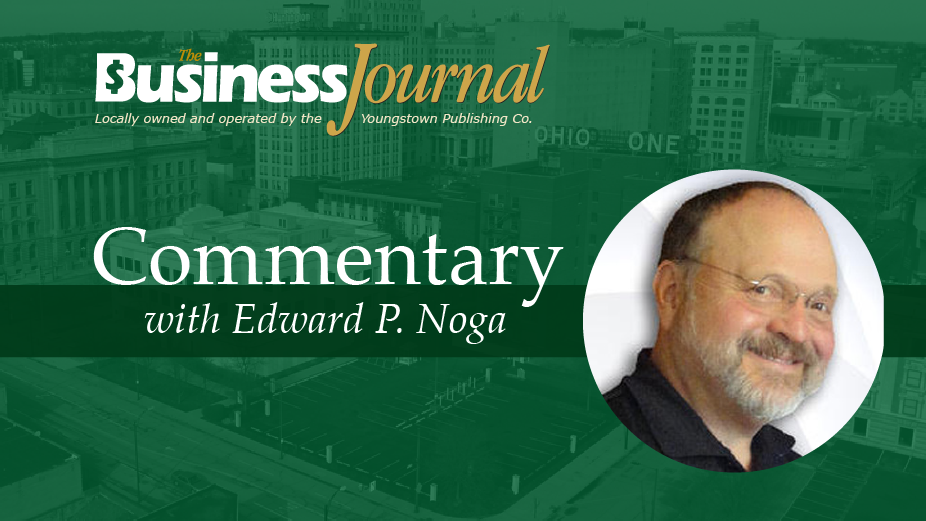By Edward P. Noga
YOUNGSTOWN, Ohio – When Mom took me to the symphony in the mid-1950s at Stambaugh Auditorium, the conductor, John Krueger, was in his mid-30s. When you are 5 years old, all adults look pretty old to you.
There we were in this wonderful performance space, experiencing music by dozens of musicians playing all kinds of instruments. Being in grade school and having regular classes in music, I found it interesting to see, in person, some of the instruments that we learned about in class.
I don’t remember what they played. I do remember, however, what they played fascinated me, the hand and arm gestures of the conductor coordinating the music.
As a youngster, I had the “wow” experience of walking into the auditorium on Fifth Avenue just north of downtown. I remember that as the concert began and the first few pieces were played, I was equally enthralled when I looked up at the grand ceiling.
A few years later, the initial experiences of music in a school class and live music at Stambaugh Auditorium were expanded as Leonard Bernstein initiated the Young People’s Concerts on television. All of a sudden, through the magic of TV, we were transported to New York to experience the New York Philharmonic.
As I got older, my experience of theater spaces expanded to include the world of movies at the Warner Theater. Again, a grand space with an intriguing ceiling.
The magic of film, especially Cinemascope, took me in. The snack stand was great but the wide screen drew me right into the world of Hollywood. As time went on, the added treat of taking the bus downtown with friends to go to the movies and the YMCA made for memorable experiences.
Decades later, it’s no surprise that the histories of both Stambaugh Auditorium and the Warner Theater have changed, just like our lives change.
There are highlights and lowlights. There are great times and not so great times. How lucky are we, like other cities, to have such grand edifices and spaces still with us. And how extra lucky are we to have individuals and organizations with insight and determination to make sure that we can enjoy these wonderful spaces.
Both venues have become diverse as to their uses and schedules. Both have become gathering spaces for much more than their early benefactors could have imagined. Thankfully, the same can be said for other venues such as the Robins Theatre in Warren and the Main Street Theater in Columbiana.
The list of saved and repurposed structures is growing. How often do we hear the importance of knowing our history as we move forward? How often do we hear that our community personality grows like our individual personality: Our past helps to determine our future.
In the past few years, despite economic downturns and worldwide pandemics, both Powers (Warner Theater) and Stambaugh auditoriums have been truly blessed through foresight, to be maintained and enhanced so as to remain iconic structures. Stambaugh has been the scene of constant construction the past few years. And Powers is embarking on an aggressive schedule of roof replacement and other projects.
We all know that such initiatives don’t happen because of a magic wand. They happen with a lot of planning, a lot of sweat and a lot of community support through raising funds and capital campaigns.
It is true that my fond memories of orchestra concerts and the movies happened because of those before me and my family and friends. Future generations will have the same (and many more) fond memories because of what we engage in now.
Along the same train of thought, this month a similar long journey is being celebrated as we reopen the Reuben McMillan Public Library. (Reuben, born in 1820, was an apprentice saddle-maker who became a teacher and one of the founders of the local library system in 1880.) The $27 million project has been part of the financial planning of the library for decades. What a tribute to planning, foresight and financial stability.
One final memory, if I may, about coming downtown in my youth to see the movies. When the movie “Ben Hur” was playing downtown at the State Theater (façade still there on Federal Street), my grandmother “Baba,” took the bus down South Avenue. I took the bus from the West Side. Baba was an immigrant from eastern Europe who arrived here at the beginning of the 20th century and reared nine children. “Ben Hur,” like other movies of the time, had an intermission. I ran to the snack bar and stood in line before heading back to my seat. To my surprise (and fright) Baba wasn’t there. I returned to the lobby where the usher pointed outside at a woman standing on the street.
I ran out and said, “Baba, what’s wrong?”
Her reply, “I came out to wait for you.”
She obviously didn’t understand what an intermission was. I told her the movie wasn’t over yet.
To which she responded, “I thought it ended strange.”
We should be grateful that the history of Powers and Stambaugh auditoriums is far from over. The same can be said of the main library, the Robins Theatre and Main Street Theater and many more wonderful sites.
And guess what? Our support and use of these grand places will ensure their futures. It’s not over.
